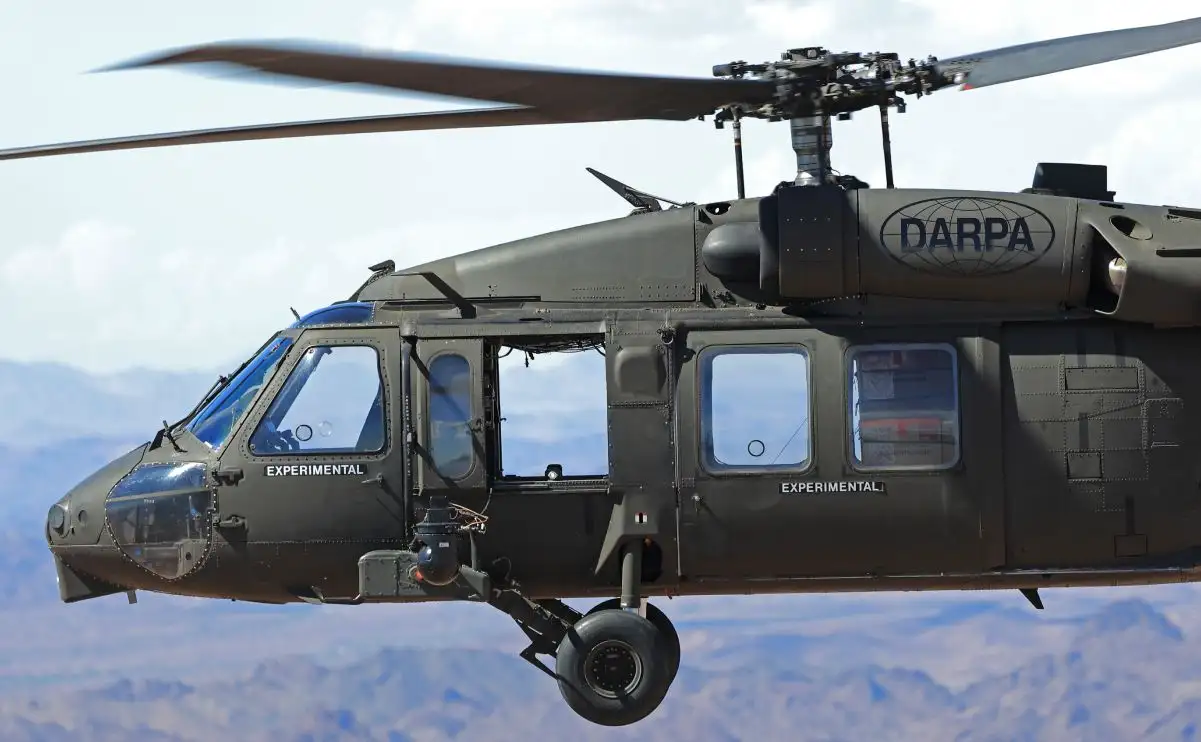Sikorsky to install onto US Army Black Hawk advanced flight autonomy system
Sikorsky, a Lockheed Martin company, has received a $6 million award from the Defense Advanced Research Projects Agency (DARPA) to install the company’s ALIAS/MATRI flight autonomy system onto the US Army’s experimental fly-by-wire UH-60M Black Hawk helicopter. Designated MX, the upgraded aircraft will enable the US Army Combat Capabilities Development Command (DEVCOM) to test and evaluate a wide range of autonomy capabilities, from single pilot operation to fully uninhabited flight.
“Autonomy-enabled aircraft will reduce pilot workload, dramatically improve flight safety, and give battle commanders the flexibility to perform complex missions in contested and congested battlespace, day or night in all weather conditions,” said Rich Benton, Sikorsky vice president and general manager, in a company news release. “Soldiers will rely on Black Hawk helicopters into the 2070s, and modernizing the aircraft today will pay dividends for decades across Army Aviation’s current and future aircraft.”
The MATRIX autonomy system forms the core of DARPA’s ALIAS (Aircrew Labor In-cockpit Automation System) program. As part of ALIAS in 2020, Sikorsky provided the hardware and engineering support to add fly-by-wire flight controls to the MX aircraft. When combined with the MATRIX autonomy system, the MX aircraft will be a near-exact copy of Sikorsky’s UH-60A fly-by-wire Optionally Piloted Black Hawk helicopter, the company’s flying lab that has tested MATRIX autonomy over hundreds of flight hours.
Sikorsky to integrate the MATRIX system into the MX helicopter in 2025
Sikorsky will integrate the MATRIX system into the MX helicopter in 2025. The aircraft will enable DEVCOM to explore and mature the practical applications and potential concept of operations of a scalable autonomy system. Evaluation will include assessment of different sensor suites to perceive and avoid threats, obstacles and terrain, and develop standards and system specifications interfaced with the MATRIX system and a fly-by-wire flight control system.
In July 2024, Sikorsky and DARPA demonstrated to U.S. military service personnel and senior Department of Defense officials how the Optionally Piloted Black Hawk helicopter can easily be flown and controlled by an operator in the cabin, or on the ground by entering high level mission goals via a tablet.

These recent demonstrations built on autonomous flights at Project Convergence 2022, when Sikorsky and DARPA successfully demonstrated to the US Army how the Optionally Piloted Black Hawk helicopter, operating without humans on board, can safely and reliably perform internal and external cargo resupply missions.
Autonomous capabilities such as MATRIX technology are a key part of Lockheed Martin’s 21st Century Security® vision, which includes modernizing the Black Hawk helicopter to stay ahead of new and emerging threats.
MATRIX technology
Sikorsky MATRIX technology could one day enable utility helicopters to resupply forward forces on the future battlefield without any human pilots or crew on board.
Sikorsky, a Lockheed Martin company, and the DARPA successfully demonstrated this logistics/resupply capability to the US Army in October 2022 using an optionally piloted Black Hawk helicopter.
At the time Sikorsky and DARPA conducted three flights at US Army Yuma Proving Ground to demonstrate resupply and casualty evacuation by an autonomous utility helicopter. The optionally piloted UH-60A Black Hawk aircraft retrofitted with a full-authority fly-by-wire flight control system used Sikorsky’s MATRIX technology autonomy system to perform the missions.
MATRIX technology forms the core of DARPA’s ALIAS project, an ongoing partnership between Sikorsky and DARPA. The autonomy project is designed to exponentially improve flight safety, reliability and efficiency of both rotary and fixed wing aircraft.
As the enabling technology for optionally piloted flight, MATRIX technology enables rotary and fixed-wing aircraft to be flown with or without humans on board, depending on the mission.
The technology combines software and hardware components to enable autonomous flight in obstacle-rich environments. This creates a safer flying experience overall for both military and commercial customers. Sikorsky’s work in autonomy technology spans several aircraft and focus areas.

Photo by Sikorsky, a Lockheed Martin company

